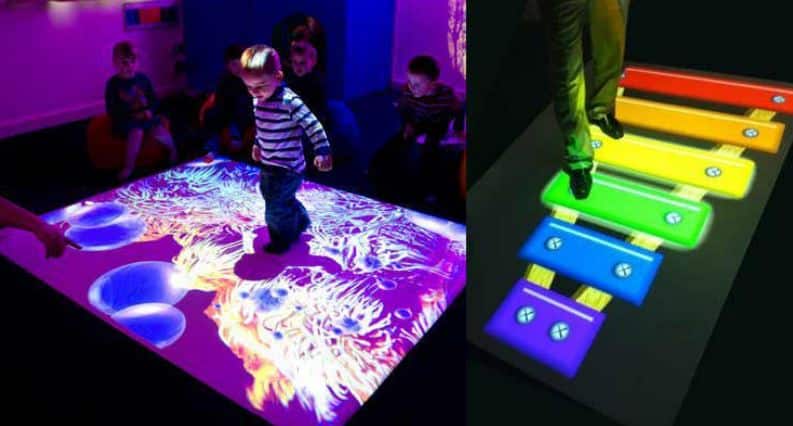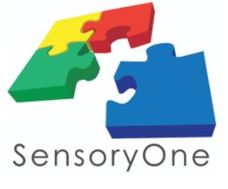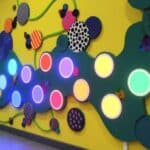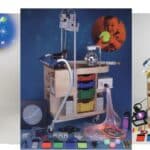
Sensory play is an important part of childhood development, especially for young kids. One of the most common ways we engage children is by sitting on the floor and playing with toys. Incorporating specific sensory activities into this floor time can help kids learn how to interact with their environment, learn from their experiences and improve both fine and gross motor skills.
At SensoryOne, we do more than sell sensory room equipment – we design whole sensory rooms for clients as part of our services. From floor to wall to ceiling, let us create your optimal multi-sensory room environment!
Top ideas for sensory engagement on the floor
Sensory play can include a wide variety of activities and toys. There really are no rules about what constitutes a good sensory experience, so feel free to get creative! Here are a few suggestions for some sensory fun on the floor.
A sensory path
A sensory path is set of markings, stickers or unique textures on the floor that guide a child through a set of movements. Popular in school hallways, sensory pathways are a fan way to keep kids moving in the direction you’d like them to move in, while releasing some energy and engaging with their surroundings. Sensory paths are also perfect for helping to develop gross motor skills in kids of all ages.
Sensory paths are a great option in schools where you are unable to created a dedicated sensory space. Once you teach kids to use the sensory path quietly, kids can be offered the opportunity to work off their feelings of anger, frustration or overwhelm by stepping out into the hall to walk the path a few times.
Sensory bins
Just like how it sounds, a sensory bin is often a large bin that has various sensory items inside of it for kids to play with. Sensory bins hold a child’s attention very well, and can be played with by kids of all ages. They are also excellent for adults experiencing dementia or Alzheimer’s disease.
There are no limits to what you can include in a sensory bin, so this is your opportunity to have some fun! Things like rice, sand, dried beans or chick peas, slime, shredded paper, shaving cream, Jell-O, dried cereal, ice cubes and so much more can be put in a sensory bin!
The biggest limitation is how easy you’d like the clean up to be, so keep this in mind when looking for things to add. Also consider the age of the kids playing with this, as you don’t want to use small, inedible items if the child is likely to put them in their mouth.
Sensory floor and wall panels
Play games and get moving with sensory stimulating, motion activated floor panels. Also, while not technically on the floor, sensory wall panels can be installed low on the wall so that young kids who are on the floor can engage with them. Whether you choose a pre-made sensory wall mural or want to make one yourself, they are a great way to engage a child in a variety of settings. Wall murals and tiles can also be installed on the floor.
An interactive projector
With many built-in games and engaging experiences, interactive motion-activated projectors are a fun way to involve both kids and adults in imaginative play. Installed in the ceiling or high in the room, an interactive projector sends an image to the floor and responds to touch on the image. If getting to the ground is difficult, the image can be projected onto a tabletop as well! This adaptability is great for adults with dementia and Alzheimer’s who might benefit from sensory engagement as well.
Interactive floor and wall panels
Electronic panels that light up or make sounds when touched are a fun and unique way to experience sensory floor play. These interactive panels can be installed on the wall or floor, and include a variety of interactive games, adjustable difficulty levels and volume and light level controls to create a customized experience for your space.
Sensory fun and benefits for kids and adults alike
Although we most commonly think of sensory play as geared for children, it can also benefit adults who may benefit from cognitive activation and increased mobility. That goes for seniors with dementia, mobility issues or simply for leisure. Getting down to the floor and getting up again after is a great way to exercise muscles that aren’t often used, especially in seniors.
Sensory floor play is a great way to help calm and distract those who are feeling overwhelmed by their surroundings, provide fun, and helps kids explore the world around them.



